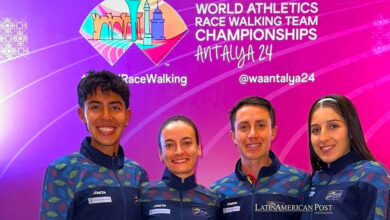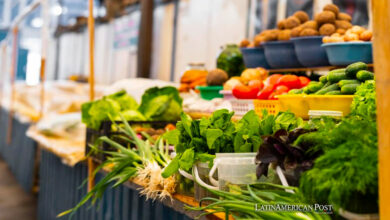Costa Rica presents its updated map after its victory in The Hague
Costa Ricans brought Nicaragua to trial in 2014 for a territorial dispute that they finally won in February of this year

In the midst of the tense situation that Nicaraguans are living, the chancellery of Costa Rica presented this week the map of its updated territory, after defeating its neighbor Nicaragua in the International Court of Justice of The Hague (CIJ) for a territorial dispute. With this, the Tico territory is updated in 36,000 km2 of maritime surface on both sides of its territory, in the Pacific it obtained recognition over 25,300 km2, while the Caribbean Sea obtained 10,800 km2. This maritime territory, is equivalent to three quarters of its total land area, which is 51,000 km2 so there was little that was in dispute.
Leer en español: Costa Rica presenta su mapa actualizado tras su victoria en La Haya
What is the cause of the dispute between the two Central American countries?
Actually the territorial difference between Nicaragua and Costa Rica are several different cases that were taken to The Hague, highlight the 2014 and the 2017. The first, called Maritime Delimitation in the Caribbean Sea and the Pacific Ocean was presented by the government of Laura Chinchilla before the CIJ, when the Nicaraguan government took international oil blocks, of which 37 were considered by the Costa Ricans to be part of their maritime territory.
The delimitation was negotiated bilaterally, but no agreement was reached. Then the lawsuit was filed on February 25, 2014 while in 2015, the ICJ ruled in favor of Costa Rica over another lawsuit filed previously after Nicaragua installed a military camp on part of a beach that Costa Ricans consider part of the Isla Portillos and, therefore, part of its territory.
Regarding the 2014 case, the ICJ issued its decision on February 2, awarding Costa Rica almost all of the blocks it had requested to be recognized under its sovereignty, with which the Ticos obtained the aforementioned 36,000 km2. Regarding the second case, the ICJ determined that Nicaragua had to withdraw the military camp, since it was in the territory of Costa Rica, leaving the land boundaries cleared between the two countries. In addition, the ICJ ruled that the Nicaraguan government had to compensate Costa Rica for the damages caused by the occupation, with the latter requesting 6.7 million dollars, which the ICJ reduced to just under 400,000 dollars.
What is the economic importance of the disputed area?
According to international law the maritime territory of Costa Rica is almost ten times larger than its continental territory, the islands increase the sovereign space of the States, especially if they move away from the coast, such is the case of Isla del Coco that gives the country a wider area. With what considering the territorial sea and the exclusive economic zone, the Central American country has 538,273 km² of extension. Within this space, Costa Ricans have an important amount of natural resources, including the fishing resources, natural gas and the most important oil reserves of the Caribbean, according to data from the Costa Rican Petroleum Refinery.
The Costa Rican government has restricted oil exploitation in the maritime area, at least until 2021. With this victory, the Central American country reaffirms its commitment to protect the environment and its natural resources, still have much to do, as the limits with Panama are not yet fully agreed, however the experience they have will be vital.
Latin American Post | Luis Ángel Hernández
Translated from "Costa Rica presenta su mapa actualizado tras su victoria en La Haya"




